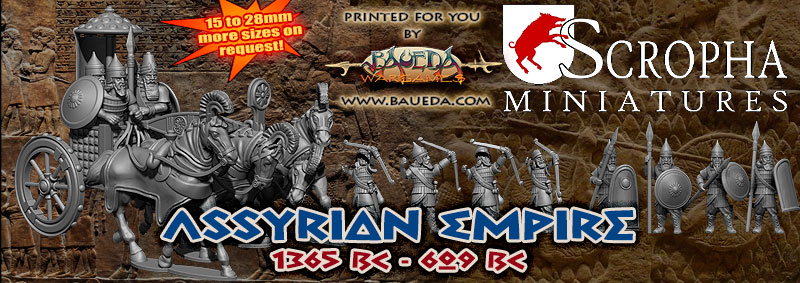|
The Middle Assyrian Empire starts from the accession of Ashur-uballit I c. 1365 BC and the rise of Assyria as a territorial kingdom. At this date the Assyrian army was probably still organised into a seasonal, pre-reformed army in which Hurri-Mitannian practice was the strongest influence. Following the reforms of Tiglath-Pileser III and before the major
changes of the later Sargonids the old royal household forces of the kisir sharruti formed the basis of a new
professional army, consisting of the royal guards regiments, regular regiments of the home army from Assyria proper,
foreign mercenaries and the corps of deportees. The troops of the kisir sharruti "royal corps" included the guards
regiments, the elite home regiments of the Ashshuraya, Arraphaya, Aramaya, Arzuhinaya and Arbilaya, the "foreign
legion" or Shaglute, the elite Samaraya from conquered Israel, the redoubtable Aramaean Itu'aya and Gurraya, and
provincial regiments, such as the Kaldaya and Pilistaya. Provincial contingents joined on the march. The field army
was divided into 5 or more all-arms corps, or emuqia, named after major deities and led by their standards. Armies
were normally drawn up with a vanguard, main battle-line in two wings, and a rearguard. The key to Assyrian success
was the combination of excellent intelligence and communications with the superbly-equipped, well-trained and
highly-mobile equestrian forces, guards regiments and regular troops of the field army. Provincial forces were small,
but revolts and invasions were crushed by the rapid response this system allowed. The Assyrian field army took its final form following the expansion of the guards and other elite
regiments of the kisir sharruti by the later successors of Sargon II. Regiments added to the kisir sharruti during this period included the Gimmiraya, Madaya and
Musraya in the reign of Esarhaddon. The latter, and doubtless the Elamaya, were also greatly expanded by
Ashurbanipal. The
probable introduction of infantry shield-wall tactics likewise took place in this period.
This range has been realized by Scropha Miniatures, based on their own study and research.
The handmade individual design and 3D printing technology allows them to develop their own characteristic style, versatile for 15mm and 28mm, with great detail and functionality, but without losing the personality of each model.
We print them on demand with very high definition machines using our own blend of different resins to achieve superb detail and
plastic like material properties.
Please ote that if you prefer to ass your own metal spears, ALL THE FIGURES in this range are available without spear on request!
Scropha Miniatures are LARGE 15mm that would mix well with Xyston and Legio Heroica (sometime referred to as 18mm).
Also available as 1:72 - 28mm or 1:35 on demand! |
|


